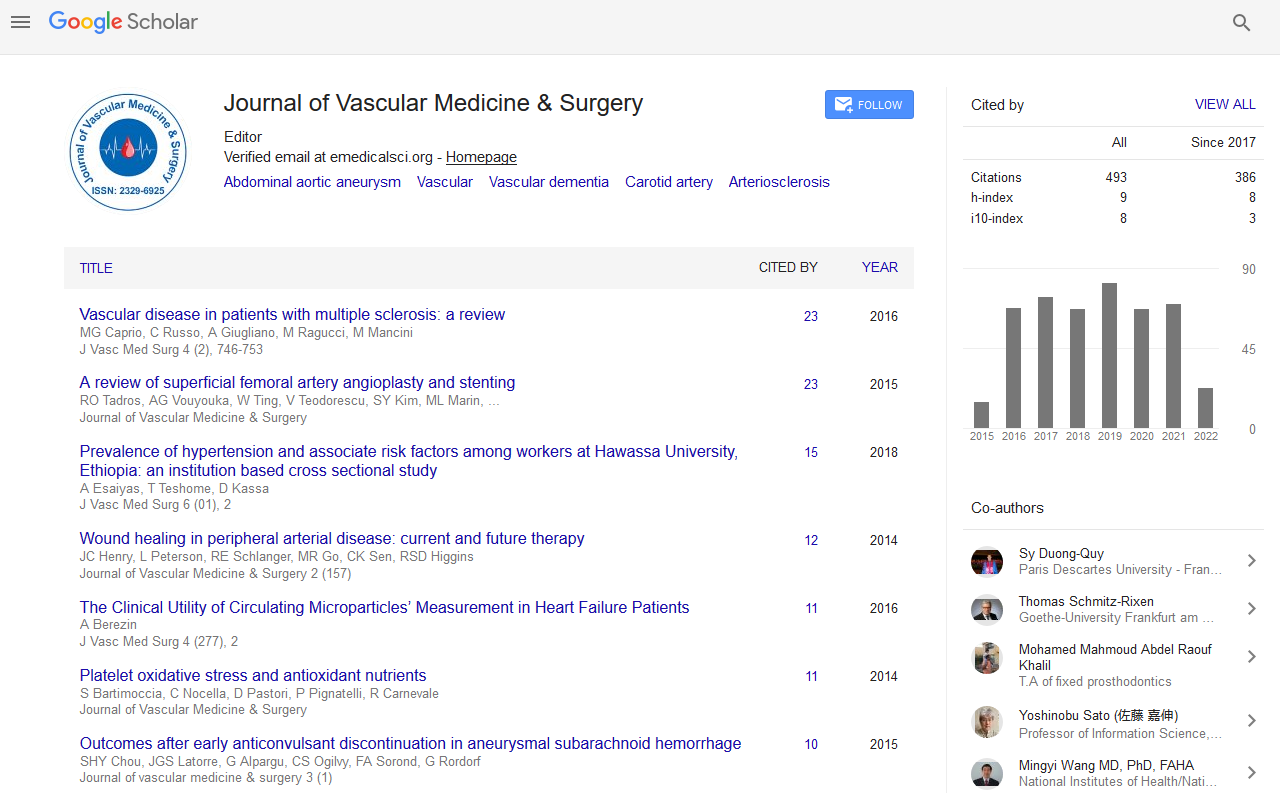Indexed In
- Open J Gate
- Academic Keys
- RefSeek
- Hamdard University
- EBSCO A-Z
- OCLC- WorldCat
- Publons
- Euro Pub
- Google Scholar
Useful Links
Share This Page
Journal Flyer

Open Access Journals
- Agri and Aquaculture
- Biochemistry
- Bioinformatics & Systems Biology
- Business & Management
- Chemistry
- Clinical Sciences
- Engineering
- Food & Nutrition
- General Science
- Genetics & Molecular Biology
- Immunology & Microbiology
- Medical Sciences
- Neuroscience & Psychology
- Nursing & Health Care
- Pharmaceutical Sciences
Abstract
Secondary Interventions Following Endovascular Repair of Aortic Dissections
Sophia Khan, Francis J Caputo, Jose Trani, Jeffrey P Carpenter and Joseph V Lombardi
Objectives: Review the literature on secondary interventions performed for patients who underwent endovascular repair of their type B aortic dissection. Endovascular repair for TBAD has been proven to be both technically feasible and beneficial in some patients. However, the information regarding secondary interventions is not cohesive. To date, there is little data to help guide physicians on the indications and benefits of secondary interventions in the setting of previous endovascular repair for TBAD.
Methods: PubMed database was queried for publications using the following combination of keywords; “aortic dissection”“type B”“secondary intervention”“false lumen thrombosis”“stent graft”“aortic remodeling” and endovascular repair. Sixteen articles were selected and reviewed for secondary interventions, indications for procedure and effects on false lumen thrombosis. Data was collected and a composite database of patients was created.
Results: Literature review demonstrated 161 of 862 patients required secondary interventions for entry tears, retrograde type A dissection, false lumen degeneration with aortic expansion, graft malfunction and various access complications. The complete false lumen thrombosis rate was 33% and overall mortality was 18.2%.
Conclusions: Secondary interventions provide a useful adjunct to failing endovascular repair of aortic dissections. A variety of treatment options are available for aneurysmal degeneration post TEVAR. This review also shows that these secondary interventions, in combination with proper surveillance and optimal medical management, are feasible but carry high all-cause mortality


